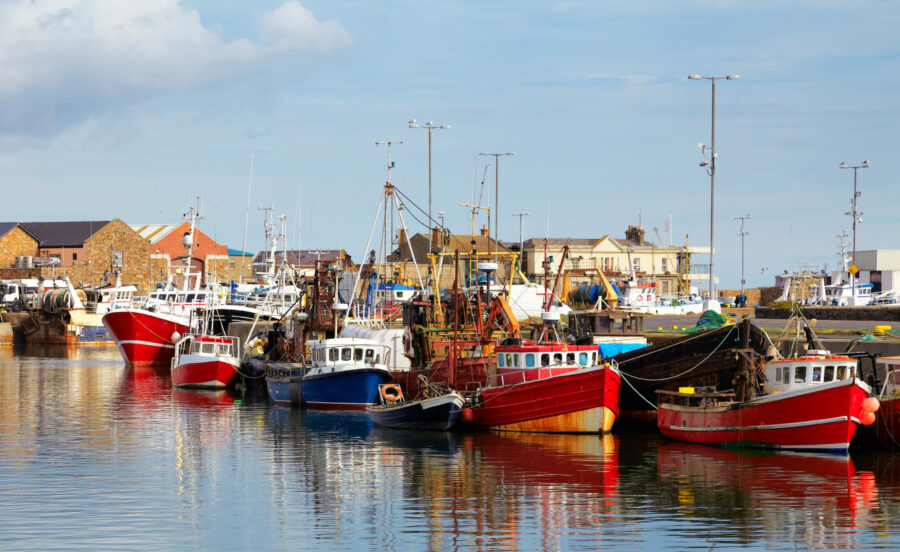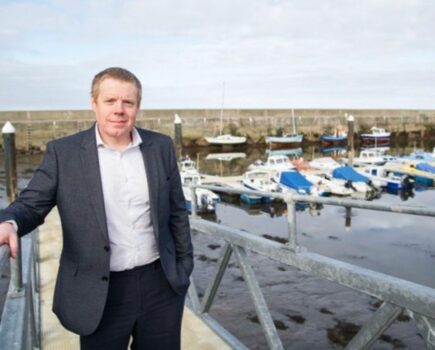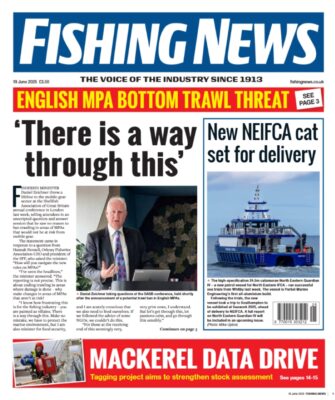Ireland’s fishing ports, long the backbone of coastal communities and a significant contributor to the national economy, are demonstrating remarkable reillience in the face of evolving challenges, according to new reports published by Ireland’s seafood development agency Bord Iascaigh Mhara (BIM).
While the catching sector navigates turbulent waters, the growth of seafood processing is providing a crucial lifeline and reshaping the economic landscape of these essential hubs, it says.
The reports, collectively titled ‘The Economic Impact of the Seafood Sector at Ireland’s Main Ports’, offer a comprehensive five-year trend analysis, encompassing a national overview and 10 detailed individual port reports. In 2023, the Irish seafood sector underpinned over 8,760 jobs across these ports, injecting an impressive €736m into the Irish economy. This encompasses direct employment in fishing and processing, alongside ripple effects in transport, services and local businesses.
However, the reports also highlight significant shifts within the sector over the past five years. Direct gross value added (GVA) from fishing has seen a 23% decrease, accompanied by a 15% reduction in employment within the sector. Aquaculture GVA has also experienced a decline of 7.5%.
These downturns are attributed to a confluence of factors, including reduced quotas and escalating operational costs – pressures that have been felt acutely in ports such as Union Hall in West Cork, Greencastle in Co Donegal, and Kilmore Quay in Co Wexford. These communities, often with limited alternative industries, are grappling with the additional burdens of labour shortages and dynamic market changes.
In contrast, the seafood processing sector emerges as a significant growth area. Ports like Ros an Mhíl in Co Galway and Howth in Co Dublin are leading this charge, experiencing robust growth in processing, which is increasingly contributing to jobs and GVA. Howth, in particular, has strategically pivoted towards this sector, showcasing successful adaptation to changing industry dynamics. Even traditional powerhouses like Castletownbere and Killybegs, while remaining vital landings hubs, are seeing the growing importance of processing.
Dr Emmet Jackson, director of economic and strategic services at BIM, underscored the key role of these ports at the reports’ launch. “The data contained in these BIM reports, developed in partnership with Oxford Economics, clearly illustrate the leading role of Ireland’s fishing ports to local economies,” he said.
“Ireland’s main ports are important for seafood production and for sustaining jobs and communities along the coast. While the fishing sector faces ongoing pressures, Ireland’s ports have shown remarkable resilience, with seafood processing and supply chain industries playing an increasingly important role.”
The reports acknowledge the sector’s impressive adaptability in overcoming shocks such as the UK’s departure from the EU and the Covid-19 pandemic. However, BIM cautions that persistent challenges remain, including inflation, skills shortages, ongoing quota pressures and the emergence of offshore renewable energy developments, and warns that addressing these issues will be crucial to securing long-term viability and prosperity.
Richard Curtin, BIM senior economist, expressed gratitude to all participants in the socioeconomic survey, whose insights were vital to the study’s findings. ‘The Economic Impact of the Seafood Sector at Ireland’s Main Ports’ reports are available here.
This story was taken from the latest issue of Fishing News. For more up-to-date and in-depth reports on the UK and Irish commercial fishing sector, subscribe to Fishing News here or buy the latest single issue for just £3.50 here.
Sign up to Fishing News’ FREE e-newsletter here.








